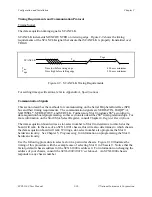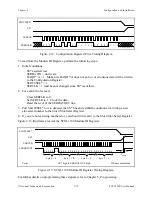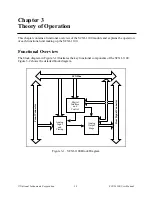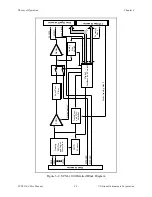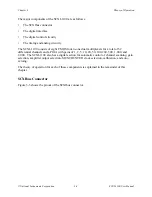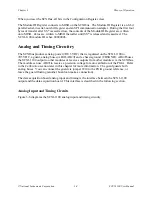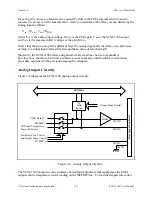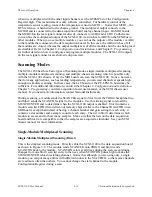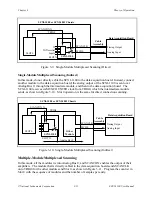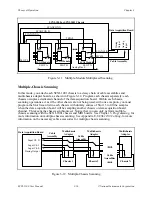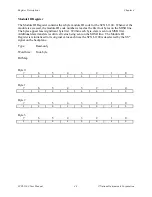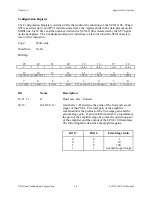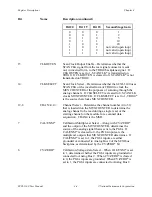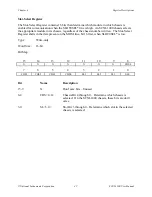
Theory of Operation
Chapter 3
SCXI-1100 User Manual
3-8
© National Instruments Corporation
Digital Control Circuitry
Figure 3-5 diagrams the SCXI-1100 digital control circuitry.
Module ID Register
Configuration
Register
Serial Data Out
Input Channel
Select
PGIA
Gain
Select
Output
Stage
Control
Hardware
Scan
Control
SCANCLK
Path
Control
Buffered
Serial Data In
Buffered Digital
Control Signals
Figure 3-5. SCXI-1100 Digital Control Circuitry
The digital control circuitry section consists of the Configuration Register and the Module ID
Register.
The Configuration Register is a 3-byte serial-in parallel-out shift register. Data is received on the
MOSI line from either Slot 0 or the data acquisition board when SS* is enabled and D*/A
indicates data transfer (D*/A low). You use the Configuration Register for channel, gain,
calibration, and auto-zeroing selection, in addition to configuring the SCXI-1100 for scanning
options. All the control bits and the gain-select bits feed into a latch before being routed to the
rest of the module. The channel-select bits are taken directly from the shift register. Complete
descriptions of the register bits are given in Chapter 4, Register Descriptions. Writes to the
Configuration Register require the following steps:
1. Drive SS* low to enable communication with the board.
2. Drive D*/A low to indicate that the information sent on the MOSI line is data.
3. The serial data becomes available on MOSI. SPICLK clocks the data into the register.
4. Drive SS* high and D*/A high to indicate an end of communication. This latches the Configuration
Register bits.




